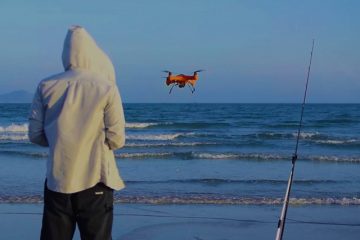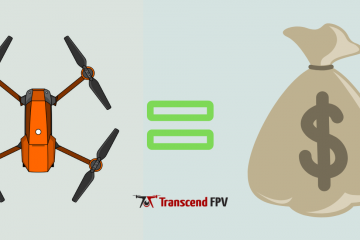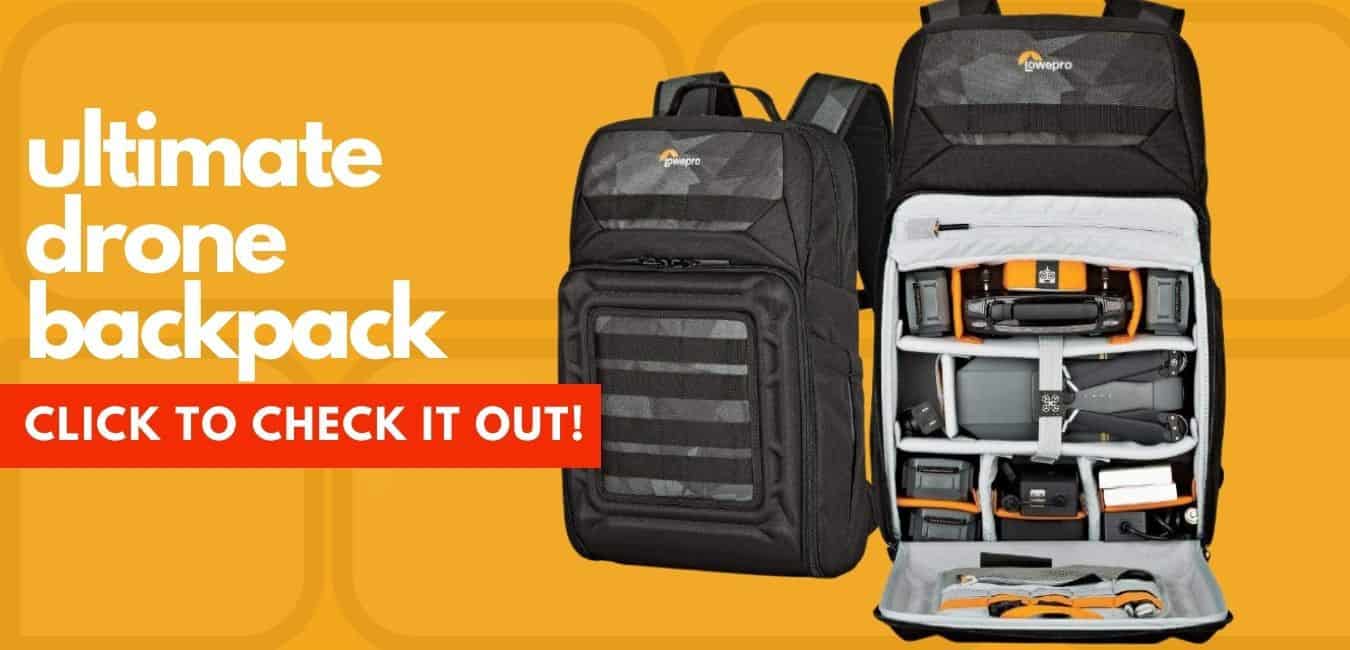Can You Really Fish With A Drone?
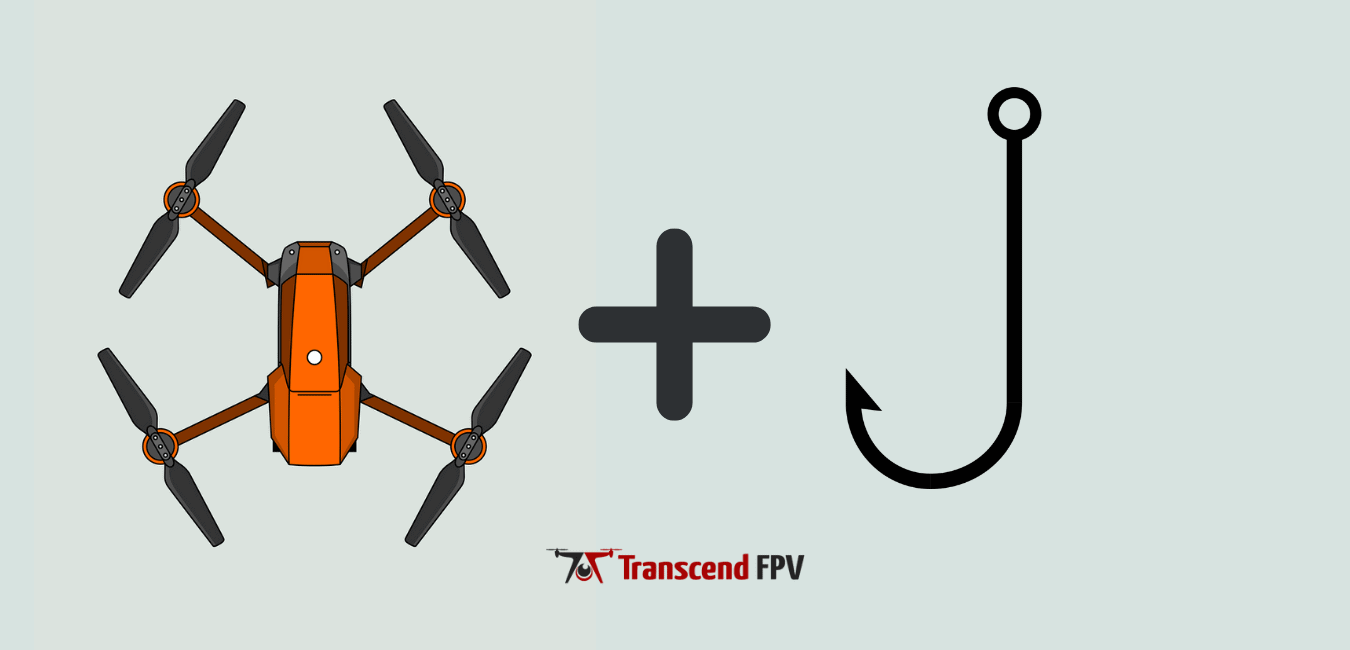
TranscendFPV is a reader supported product and review site. Clicking on links to learn more, or buy products, may earn us money, and support our work. Learn more about the history of TranscendFPV and our passion on our About page.
When you think about flying a drone, you wouldn’t necessarily say that the first thing that comes to mind would be fishing with it. Drones are known for their impressive cameras and high mobility. Thanks to drone technology advancements, the prospect of having an airborne helper on your fishing trip have become very enticing to many anglers.
You can fish with a drone. Drones have a very high payload capacity, and fishing lines, even with bait attached, do not make modern drones too heavy to fly. Using a drone to deploy bait is a great way to ensure you get the most accurate cast and don’t waste your time looking for fish.
In the past, you were either a drone enthusiast or a fishing enthusiast. Now you can be both. This guide will provide a few things you need to know before packing your drone into your tackle box and heading off to your favorite fishing spot.
[sc name=”aff-snippet” ]
Quick Links
Why Bring Your Drone On A Fishing Trip?
To some, using drones for fishing purposes might be a foreign concept. Taking your drone along next time you and your friends head out to the water in search of that perfect catch, consider the advantages drone fishing might offer you.
Surveillance
Most modern drones have high-quality cameras with a direct feed to a mobile device. Utilizing your drone’s flight range and impressive battery life, you can easily use it to survey the area in which you are fishing before you cast your first line to find the optimal spot to set up shop. Having a bird’s eye view of the fishing area ahead of time will save you a lot of effort. Instead of guessing where the fish are, you’ll be able to see them.
Dropping Bait
In 2018 Danny Moeskops set the casting world record at a bewildering 313-325 yards. Unless you are Danny, the chances are that you cannot cast that far. That’s where the drone comes in. Most modern drones have a maximum flight range of over 5000 yards, giving you ample room to drop your line as deep as you want.
Which Drone Is The Best Fishing Drone?
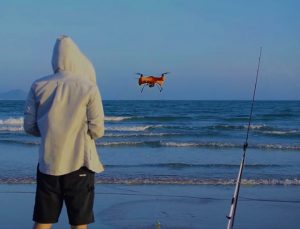
Thankfully no one company has a monopoly on drone technology, so the options for drones suitable for fishing purposes are quite extensive. In fact, there are drones specifically BUILT FOR FISHING! How cool is that? If you are looking for a dedicated fishing drone check out our ultimate guid on the best fishing drones! If instead you want a great all around drone that can also be used for fishing, here are three drones we think you should consider getting.
Gannet Pro +
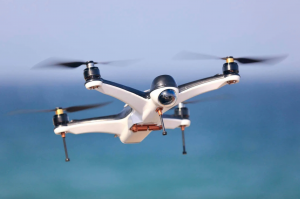
Gannet specializes in everything to do with drone fishing. Their devices allow you to safely carry payloads a long way offshore and accurately deploy them once it’s in position. The Gannet Pro + is a new class of waterproof, load-carrying drones and vaunt an impressive list of design features.
- Completely waterproof and able to fly in heavy rain.
- This drone can carry a maximum payload of up to 5.5lbs.
- Its efficient aerodynamic shape allows it to fly in high winds for extended periods.
- It boasts a reliable and accurate GPS flight controller.
- Includes a high weather resistance and sand proof remote that allows the drone to be launched on a beach without sand getting stuck in the small sticks.
- It has multiple external attachment points for action and 360 cameras as well as special spotlights.
- Flight time of up to 20 minutes.
- Controller range: 1 mile
- Video range: 0.6 mile
DJI Phantom 4 Pro V2.0
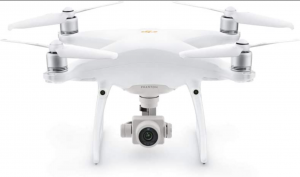
DJI is known for its incredible drone technology, pioneers who first brought drones into the mainstream’s consciousness. The Phantom 4 Pro V2.0 is a continuation of their strive for the perfect drone. This drone’s features include.
- Incredibly easy and intuitive to fly.
- It boasts an impressive high-definition camera system.
- Its titanium and magnesium construction makes it strong yet lightweight.
- It has excellent reliable return to home functionality.
- This drone can carry a maximum payload of up to 2.2lbls
- It comes with a remote controller with a 5.5in 1080p built-in screen that is twice as bright as modern smart devices and has a 5-hour battery life.
- Flight time of up to 30 minutes.
- Video/Controller range: 4.3 miles
DJI Mavic 2 Pro
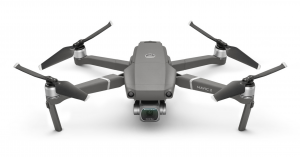
DJI spent countless hours researching and developing the Mavic 2, optimizing it to ensure increased propulsion, less power consumption, and lower noise levels. The Mavic 2 boasts an improved FlightAutonomy system that offers a smoother, quieter flight without compromising safety. This drone’s features include.
- The drone is equipped with a high-quality Hasselblad video camera with hdr functionality and a hyper-lapse feature.
- This drone has obstacle sensors on all sides of the aircraft allowing for more excellent safety during flight.
- This drone is compatible with the DJI Goggle series that wirelessly connects via OcuSync, allowing users to control the gimballed camera with the In Head Tracking Mode.
- This drone can carry a maximum payload of up to 2lbs
- Flight time of up to 27 minutes.
- Video/Controller range: 4.3 miles
Attaching A Bait Release Mechanisms To Your Drone
If you use your drone to take your selected bait out beyond your casting range, consider what kind of release mechanism you will equip onto your drone before take off. Having a reliable delivery method will prevent your drone from being pulled into the watery depths below.
Electronic Release Mechanisms
Electronic release mechanisms are by far the most straightforward mechanisms to operate. You hold down the release button to load your bait. Once locked in place, you fly your drone to the desired location and press the button again to release it.
Electronic release mechanisms utilize a battery to open and close the release clip. It is important to note that all batteries create an electromagnetic field, and electromagnetic fields are known to interfere with your drone’s compass. If you are considering installing an electronic release mechanism to your drone, be mindful of its placement.
Mechanical Release Mechanisms
Many would believe that electronics always trump mechanical. This line of thinking might not be the case when it comes to bait release mechanisms.
Mechanical release mechanisms release the line by using the tension felt by the drone. One method used in mechanical release mechanisms is using two plates that are pressed together using a clamp. When the time comes to release your bait, all you have to do is close your reel’s bail. Doing so puts tension on the line, and the bait gets released.
Another method that mechanical release mechanisms utilize is to use two ball bearings instead of two plates. A loop is used in place of the clamp. The loop is positioned behind the ball bearings securing it in place. The amount of tension required to release the bait is determined by adjustable screws, and tighter screws equal stronger tension. The line is released once the tension is overcome.
Line Attachment Alternative
Instead of attaching a literal fishing rod to your drone, anglers instead use a downrigger release clip. This clip keeps your fishing line attached to your drone until you get a bite, at which point the pressure on the clip generated from the fish trying to swim away will force the pin to release your fishing line from your drone, keeping it safely in the air. At this point, the drone is free from the line and can be used to film the catch in progress.
Before You Attach Bait To Your Drone And Start Flying
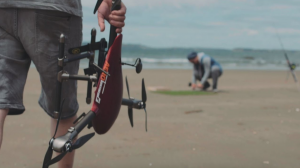
Be mindful of the following critical factors before takeoff.
- Ensure that you are legally permitted to operate your drone in the area you are in.
- Keep up to date with weather reports. High winds can negatively affect your drone’s performance.
- Ensure your drone’s software and firmware are up to date.
- Always check that your propellors are in good condition.
- Ensure your drone’s compass is fully calibrated before take off.
- Lastly, always double-check that your drone’s battery is fully charged. It takes time to fly your drone over long distances. You don’t want to take any chances with a battery cutting your flight short.
Conclusion
Using your drone as a fishing companion is an excellent strategy. Its long-range flight capability and fantastic camera make it ideal for spotting the perfect catch. Next time you pack your fishing rods and tackle box, consider bringing your drone along too.
If drone fishing sounds like something you really want to try, don’t forget to check out our ultimate guide on drone fishing!
